Astrophysics
Public Lecture: ‘Finding the Big Bang’ (Professor P. James Peebles)
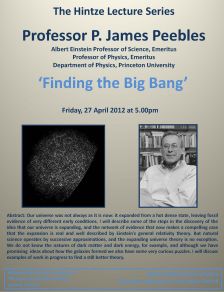
Professor P. James Peebles
Albert Einstein Professor of Science, Emeritus
Professor of Physics, Emeritus
Department of Physics, Princeton University
New paths to particle dark matter
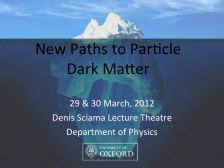
The aim of this meeting is to discuss recent developments concerning searches for dark matter, as well as relevant astrophysical issues and particle phenomenology. On Thursday 29th March there will be a Half-day Meeting (2-6 pm) to take stock of the field, while Friday 30th March will be devoted to a Workshop (9 am-4 pm) concerning both theory and experiment.
Subir Sarkar s.sarkar@physics.ox.ac.uk
23 March 2012
Cosmic motion offers 'new window' on evolving Universe
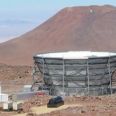
The first observation of a cosmic effect could give astronomers a new tool for understanding the forces behind the Universe's formation and growth, including the enigmatic phenomena of dark energy and dark matter.
An international team led by Princeton University, and including Oxford University scientists, has detected the movement of distant galaxy clusters via the kinematic Sunyaev-Zel'dovich (kSZ) effect, which has never before been seen.
UK Cherenkov Telescope Array Collaboration Meeting March 19-20

The next bi-annual meeting of UK participants in the Cherenkov Telescope Array project will take place in the Denys Wilkinson Building, Department of Physics, University of Oxford, on 19th and 20th March 2012. We will have one day of science-themed talks and one day of technical-themed talks with plenty of time for interactive discussions.
Younger members of the collaboration, and Oxford physics department members with interests in high-energy astrophysics, astroparticle physics, electronics, and telescope design and construction, are particularly encouraged to attend.
Garret Cotter garret@astro.ox.ac.uk
9 January 2012
Astronomers unveil largest-ever map of dark matter
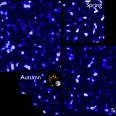
An international team of astronomers has unveiled the latest map of the distribution of dark matter in the universe. The invisible matter has been mapped by measuring the very weak effect on the images of distant, background galaxies, being distorted as their light rays pass intervening gravitating matter on their way to our telescopes - an effect known as gravitational lensing. The results appear consistent with the current "cold dark matter" model of the universe.
14 December 2011
Solving a supernova mystery
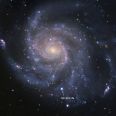
The star that exploded to create the nearest supernova of its type to be discovered since 1986 has been revealed by an international team including Oxford University scientists. New observations reported in two papers in this week's Nature show that a very dense, very small white dwarf star made of carbon and oxygen, orbiting another star, triggered the explosion. The observations also rule out previously popular models of what the second 'companion' star might look like.
7 September 2011
Brightest supernova of its type for 40 years approaching peak brightness
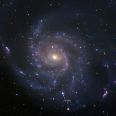
The nearest supernova of its type to be discovered for 40 years is predicted to be at its brightest 7-8 September and will be visible through a good pair of binoculars.
The supernova, which was first spotted on 24 August by scientists from Oxford University and the Palomar Transient Factory (PTF) collaboration, is in the Pinwheel Galaxy, M101.
Whilst not visible to the naked eye, with a clear sky anyone can observe the supernova using a good pair of binoculars or a small telescope:


